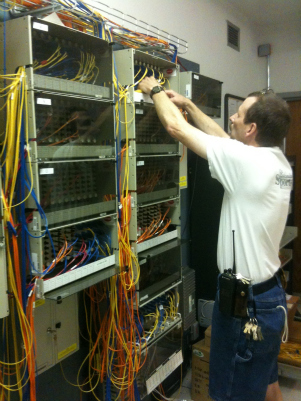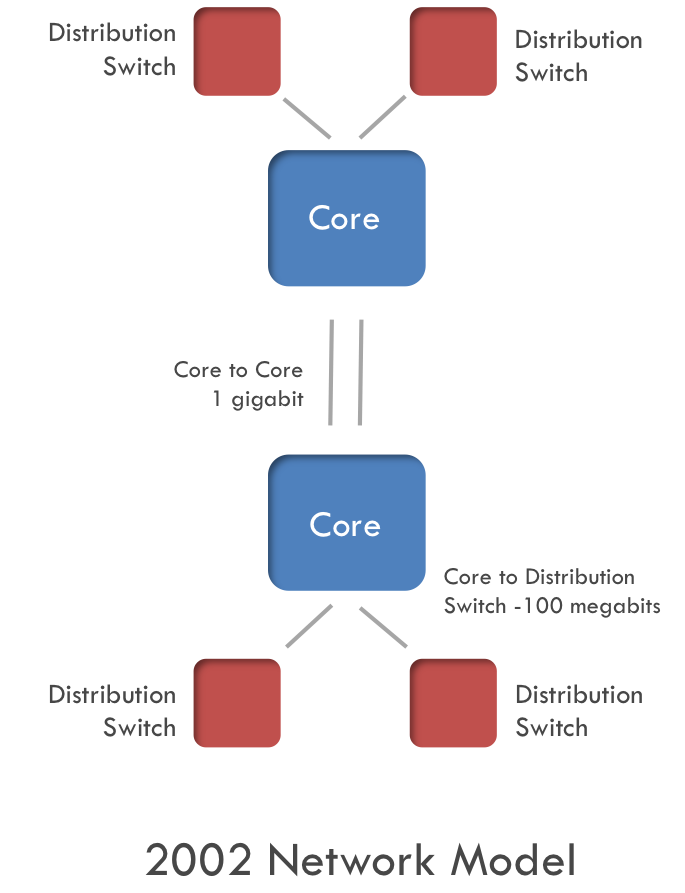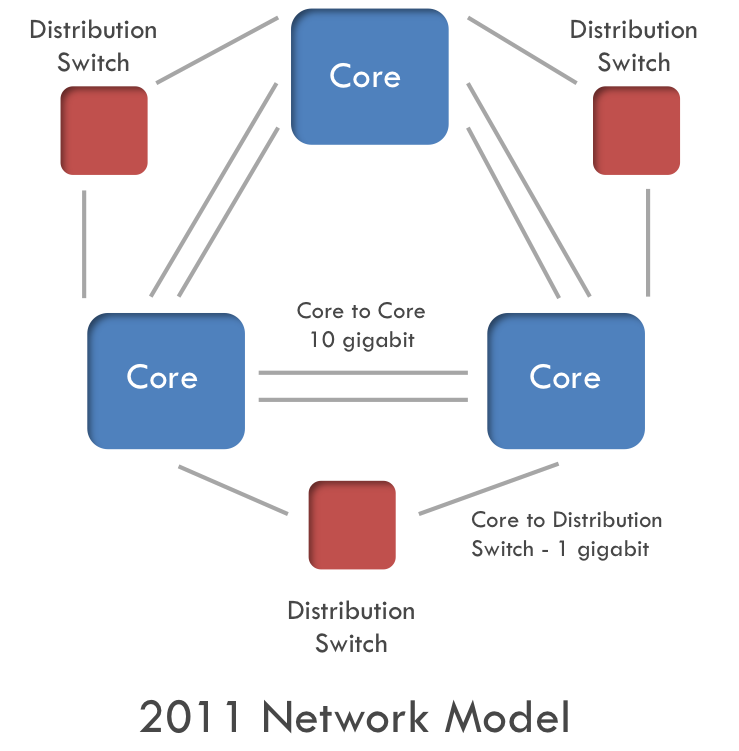For Networks, Redundancy Is the Key
 William & Mary's Information Technology department is on the verge of completing a major network upgrade. The upgrade will make the campus network redundant. Yes, that's right – redundant. Redundancy might not sound like a good thing, but for a network it is.
William & Mary's Information Technology department is on the verge of completing a major network upgrade. The upgrade will make the campus network redundant. Yes, that's right – redundant. Redundancy might not sound like a good thing, but for a network it is.
In networking terms, redundancy means there are always at least two distinct paths on which data can flow. If connections are cut on one path, there will be a second alternate path utilized. In most instances there would be no disruption of service; in fact, a user on the network would probably never know anything happened. Chief Information Officer, Courtney Carpenter, states, "Redundant routing eliminates the many single points of failure we had in our previous network."
The network upgrade began in 2008 and has cost well over one million dollars to implement. The project completely redesigned the configuration of the fiber optic and copper wiring, replaced the electronic routers and switches, and increased band width throughout the network.
 Going from a barbell to a triangle
Going from a barbell to a triangle
Scott Fenstermacher, Network Manager, is an expert in theW&M network. He helped install the campus' first network in 1984 and has been working with the network ever since. Explaining the network upgrade through diagrams, he represents the previous network with a barbell shape. That network, project completed in 2002, had two core nodes. The core serves as the backbone of the network and each core node hosted its own distribution switches, leading to about 11,000 active ports. At any point in this scheme, if a connection was cut, network service was discontinued until the connection could be restored.
William & Mary's network has grown considerably since 2002 due to various new technology-based services. Examples include the key card swipes for doors and vending machines, building operation systems like eSuds and HVAC controls, and applications like Banner and Blackboard. The new Voice over Internet Protocol (VoIP) Phone System is another campus service that operates via the network. Today there are about 33,000 active ports, three times the number we had in 2002. "Everything we do rides on the network... It was time to replace our aging infrastructure with a new fault-tolerant network that can deliver reliable service." Carpenter says.
 To accommodate the increasing demand and ensure continuous service, the network had to be completely redesigned. Rather than the barbell shape of the 2002 network core, Fenstermacher draws the upgraded network core in the shape of a triangle, with three core nodes. He explains that having three core nodes, rather than two, allows for a back-up route to any part of the core. There are also back-up routes for each distribution switch, which can each be accessed by two core nodes – thus redundancy.
To accommodate the increasing demand and ensure continuous service, the network had to be completely redesigned. Rather than the barbell shape of the 2002 network core, Fenstermacher draws the upgraded network core in the shape of a triangle, with three core nodes. He explains that having three core nodes, rather than two, allows for a back-up route to any part of the core. There are also back-up routes for each distribution switch, which can each be accessed by two core nodes – thus redundancy.
The upgraded network also has a greater bandwidth, increasing a full magnitude from 1 gigabit to 10 gigabits through the core and 100 megabits to 1 gigabit to the distributors. All this combined means there will be more consistent and more powerful service on the W&M network.
Cars aren't the only things traveling along highways...
Not only was William & Mary's network upgraded for redundancy, so was our Internet connection. Believe it or not, we connect to the Internet in Northern Virginia. Just like cars, the data fibers connecting us to the Internet, travel alongside I-95 to connect to a "peering point" of the web. With various construction projects along the interstate, the potential for a fiber to be cut is great (backhoes are especially threatening). Up until just a few months ago, we only had this single route to the peering point – but now we have two. The new route still follows along the highway system, but uses a different path to reach the NoVA peering point.
Where are we now?
Three years after it began, the network upgrade is almost complete. About 95% of W&M buildings have been converted to the upgraded network and we expect the project to be complete toward the end of the 2011 calendar year. There have been a couple bumps along the way, resulting in a series of network outages this summer. Carpenter, describing the upgrade process as complicated, explains, "It is a whole new technology, we are still learning our way around it." The good news is this phase is only temporary. Once finished, users can expect to find the upgraded network to be faster and more reliable than ever.














